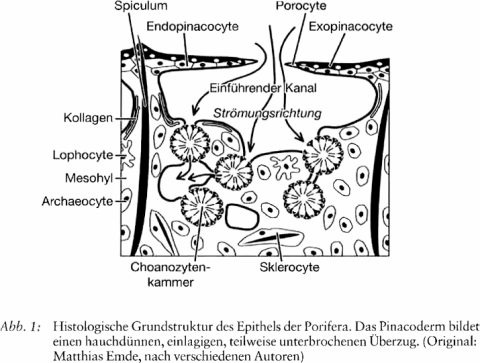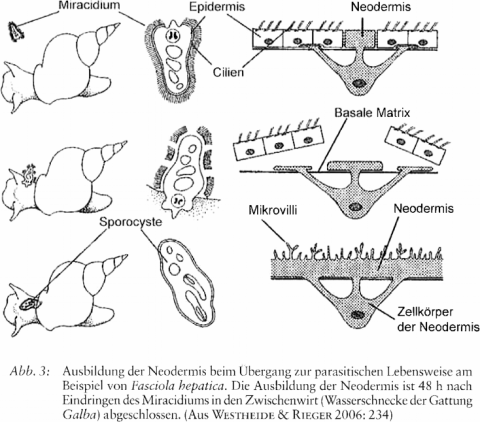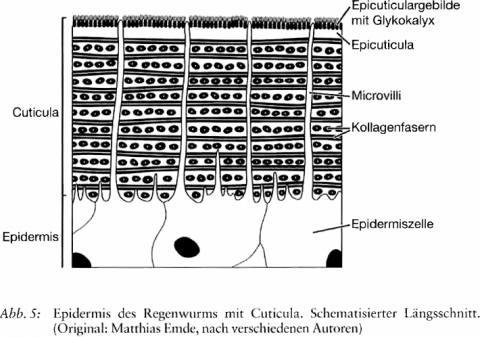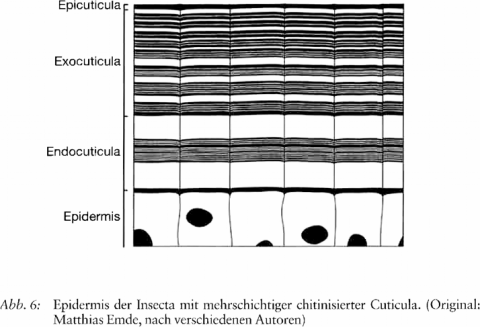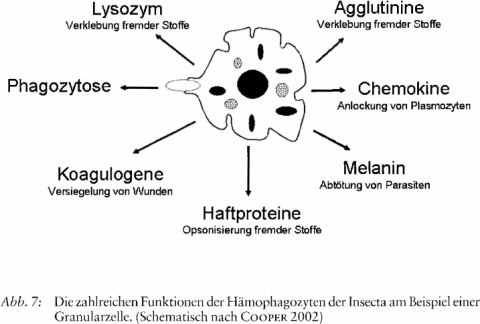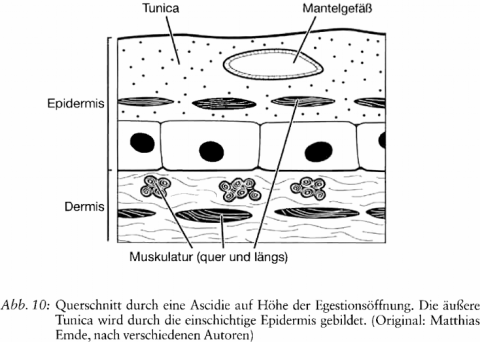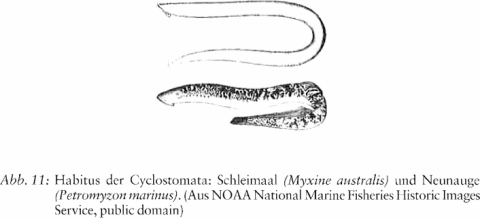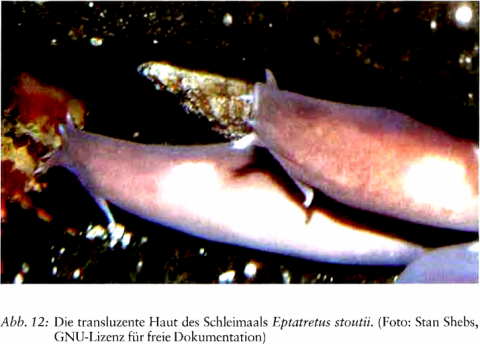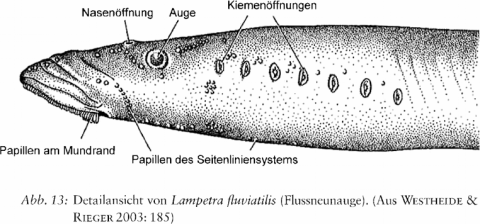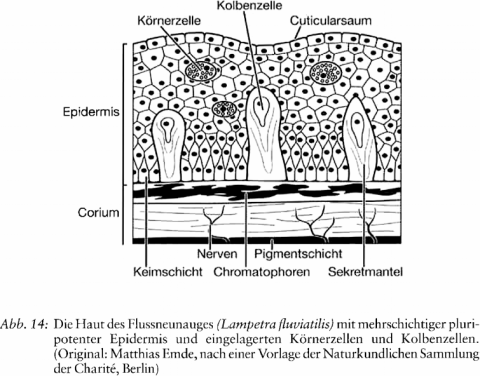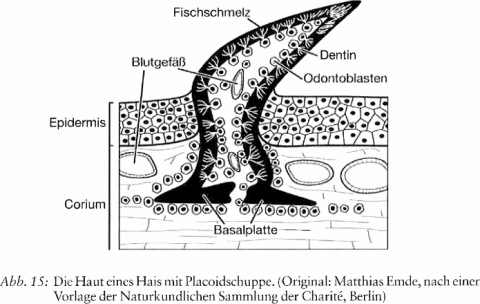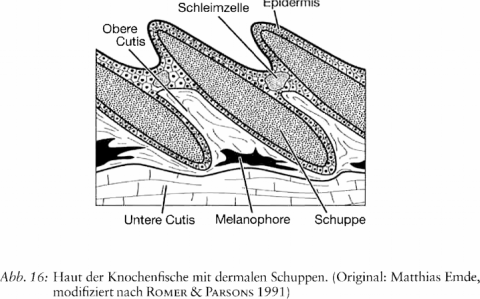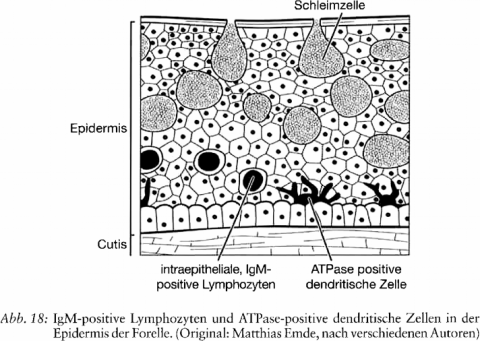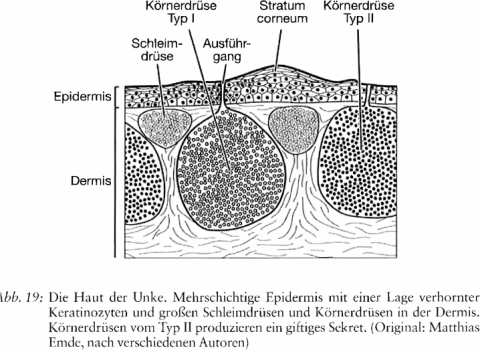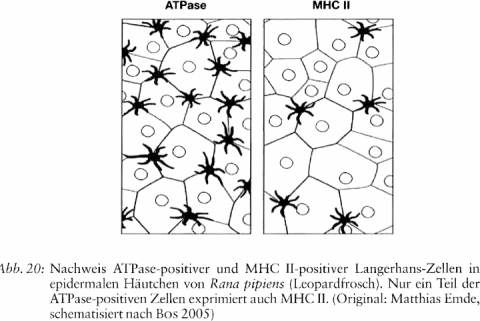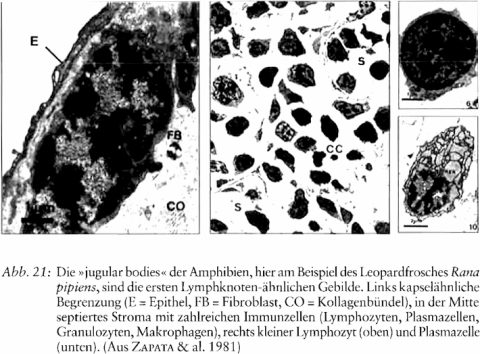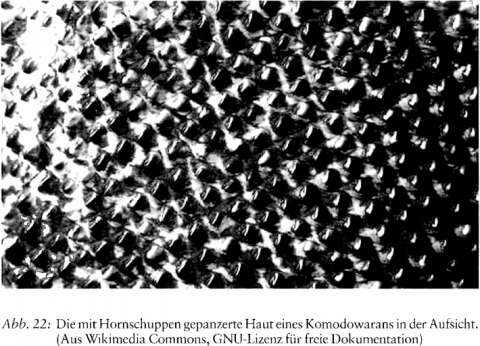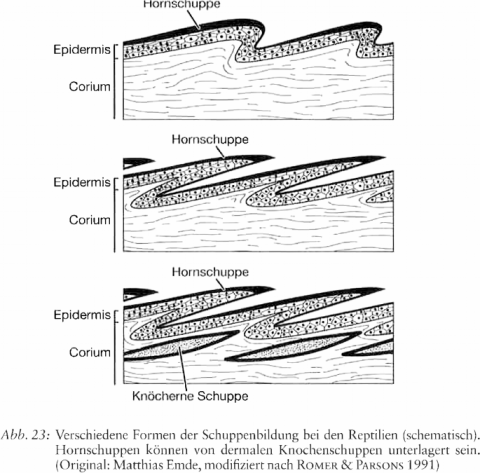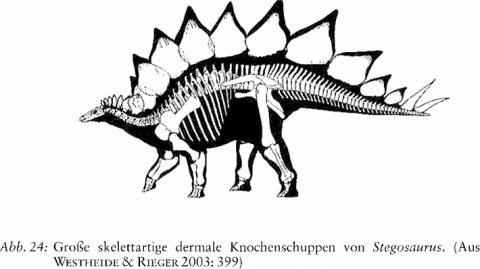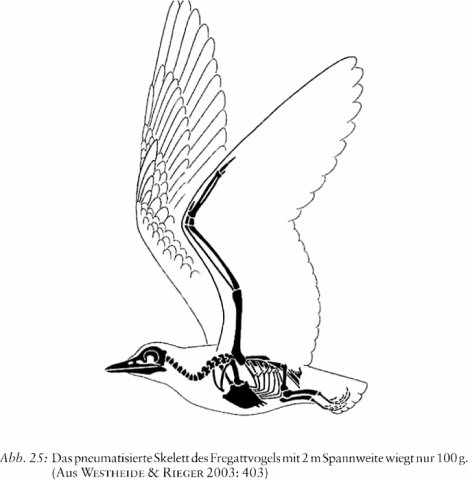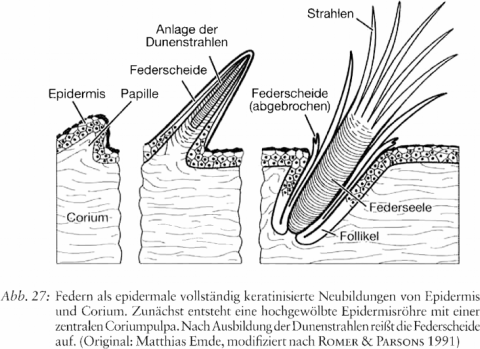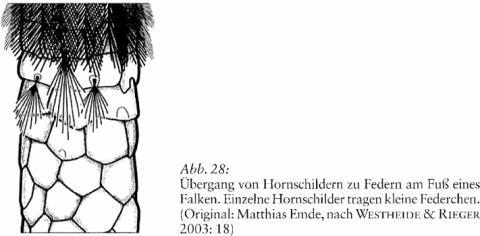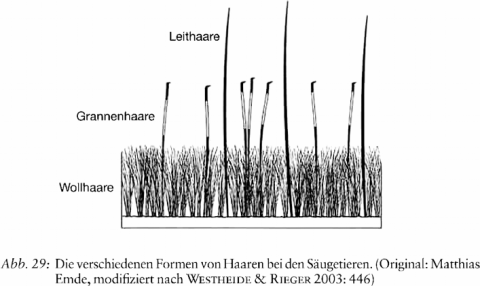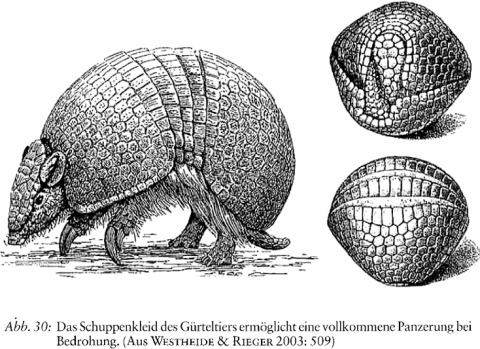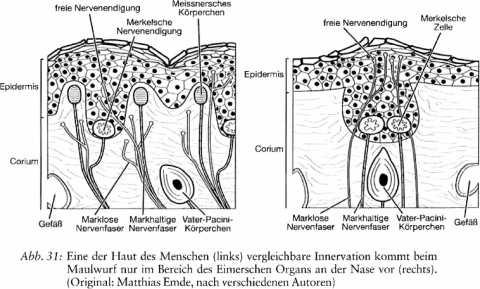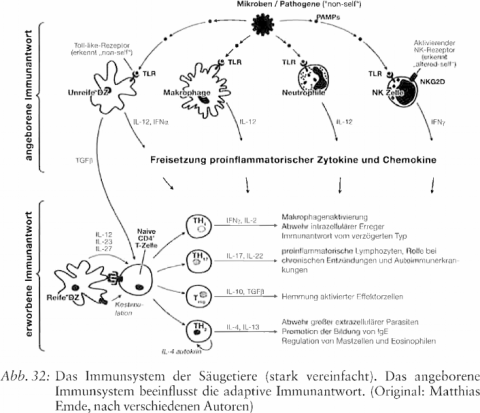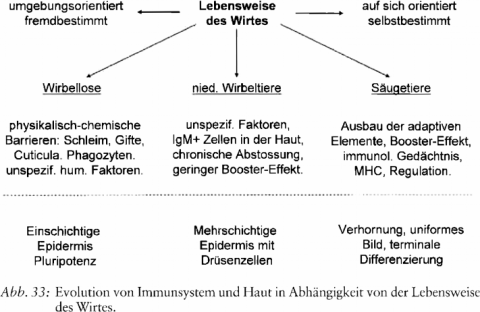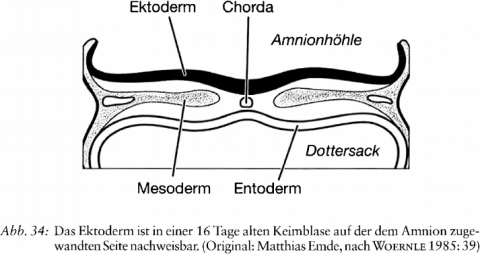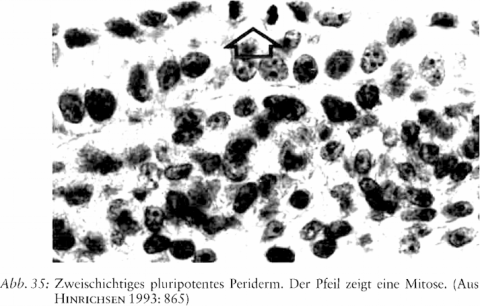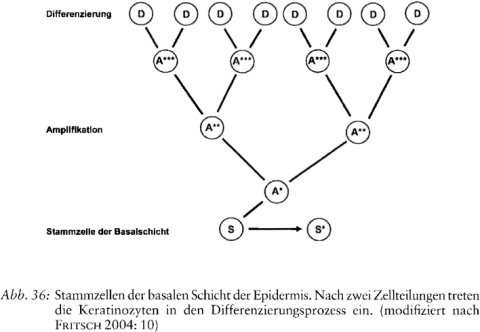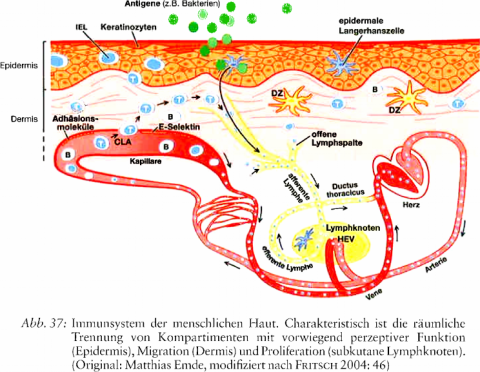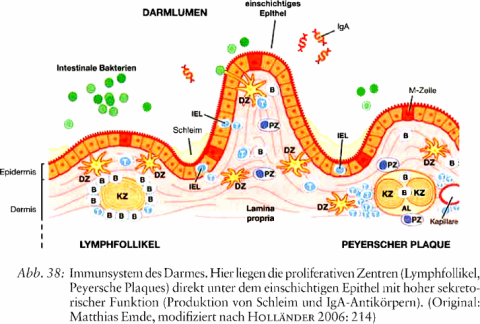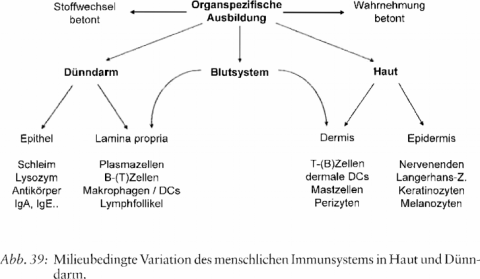Die Evolution der Haut und des hautassoziierten Immunsystems
Export Article Citation as
- Download price : €6
Abstract:
The evolution of the skin and the skin-associated immune system
This paper considers the formation of the skin and its associated structures from the most primitive metazoa to the human being:
- In Porifera the delirnitation from the outer world is incomplete. A proper epidermal sheath does not exist, merely a thin coating in the form of pinacoderm.
- Dicotyledonous Cnidaria have an ectodermis and an entodermis, both single layered, which already show a certain functional specialisation. The cells of the epidermis are fixed together with band desmosomes and ensure protection from the outer world.
- Worms go through various metamorphoses of a still single-layered epidermis which lead to a further intensification of the delimitation function (formation of a syncytium, neodermis of the Plathelminthes, formation of a cuticle in Annelida and Nematoda).
- The division of the organism into head, thorax and abdomen, as well as the formation of extremities in the Arthropoda, is enabled by a hard exoskeleton in the form of a chitinised cuticle.
- The Echinodermata, the most primitive Deuterostomia, exhibit a highly specialised but still single-layered epidermis.
- In the Tunicates, the most primitive chordate animals, the single-layered epidermis is overlaid by tunicin, a cellulose-like substance produced by the dermal cells.
- The Cyclostomata, the jawless fish, are the first to form a multi-layered epidermis. This is pluripotent and impregnated with mucosal cells.
- In the cartilaginous fish, the multi-layered epidermis maintains an exoskeleton-like supportive function through its many placoid scales.
- In the bony fish these recede into the background in the form of elastic dermal scales.
- With the amphibians, the transition from life in water to life on land leads to the first cornification of the outer cell layer of the epidermis. But the amphibians still remain connected with an aquatic environment.
- Only with the reptiles and the development of an amnion is a complete separation from the aquatic environment achieved. A stroneg marked cornification of the epidermis is often associated with this; the cornified layer has to be shed as a whole.
- In birds, the denizens of the air, the epidermis forms a novel coating of various kinds of feathers. As with the feather spines, some of the bones are filled with air. The feathers significantly contribute to the maintenance of the as yet incomplete homeotherrny.
- In mammals, a further novel formation of the epidermis is hair, which regresses only in the human being and secondary aquatic mammals.
In parallel with the increasing delimitation of the organism from the outer world by means of the skin, an innate immune system first of all developed on the basis of phagocytes and unspecific, yet highly effective, humoural defence factors. The first demonstrable adaptive immune system came with the cartilaginous fish. The development and compartmentalisation of the lymphatic system brought the formation of an immune system associated with the skin which, in mammals, especially the human being, spatially comprises three components. At the skin‘s outermost barrier to the outside world, a cellular, more sensory expression of the immune system predominates. In the middle layers of the dermis the dominant component is a dense network of capillaries which mediates the circulation and migration of immune cells. In the deeper layers of the skin, proliferative processes predominate. Thus the subcutis and its lymph nodes associated with the skin belong to the metabolic pole, the reticular dermis to the circulatory system and the epidermis to the nerve-sense system.
References
- AFIFI‚ A. & al. (1993): Seasonal conditions determine the manner of skin rejection in reptiles. Journal of Experimental Zoology 265: 459
- AGRAWAL, A. & al. (1998): Transposition mediated by RAG1 and RAG2 and its implications for the evolution of the immune system. Nature 394: 744-751
- ALONSO, L., FUCHS, E. (2003): Stem cells in the skin: waste not, Wnt not. Genes and Development 17: 1189-1200
- AMIOT, R. (2006): Oxygen isotopes from biogenic apatites suggest widespread endothermy in Cretaceous dinosaurs. Earth and Planetary Science Letters 246: 41-54
- BARTHEL, R., ABERDAM, D. (2005): Epidermal stem cells. journal of the European Academy of Dermatology and Venereology 19: 405-413
- BAYNE, C. J. (2003): Origins and evolutionary relationships between the innate and adaptive arms of immune systems. Integrative and Comparative Biology 43: 293-299
- BENDER-OSER, N. U. (2004): Die aquatile Hypothese zum Ursprung des Menschen. Dissertation Universität Bern, Schweiz
- BOLOGNA, J. L. & al. (2003): Dermatology, Vol. 1: 23-84. Mosby, Edinburgh
- BOS, J. D. (2005): Skin Immune System. Cutaneous Immunology and Clinical Immunodermatology. CRC Press, Boca Raton
- BOSCH, T. C. G. & al. (2009): Uncovering the evolutionary history of innate immunity: the simple metazoan Hydra uses epithelial cells for host defence. Developmental and Comparative Immunology 33: 559-569
- BRÄNNSTRÖM, K. & al. (2009): The Schistosoma mansoni protein Sm16/SmSLP/SmSPO-l assembles into a nine-subunit oligomer with potential to inhibit Toll-like receptor signaling. lnfection and Immunity 77: 1144-1154
- COOPER, E. L. (2002): Comparative Immunology. Current Pharmaceutical Design 8: 99-110
- COOPER, E. L. & al. (2005): Comparative Immunology of the Integument. In: Bos, J. D. (Ed.), Skin Immune System, pp. 19-53. CRC Press, Boca Raton
- COOPER, M., ALDER, M. N. (2006): The evolution of adaptive immune systems. Cell 124: 815-822
- EDELE, F. & al. (2007): Innate and adaptive immune responses in allergic contact dermatitis and autoimmune skin diseases. Inflammation and Allergy Drug Targets 6: 236-244
- EDLUND, U. (2005): Die Dreigliederung der Haut. In: Tycho de Brahe-Jahrbuch für Goetheanismus 2005: 80-132. Niefern-Öschelbronn
- EWBANK, J. J. (2006): Signaling in the immune response (January 23, 2006), WormBook, ed. The C. elegans Research Community, WormBook, dei/10.1895/wormbook.l.83.1, http://www.wormbook.org
- FALLON, A., SUN, D. (2001 ): Exploration of mosquito immunity using cells in culture. Insect Biochemistry and Molecular Biology 31: 263-278
- FARQUHAR, M. D., PALADE, G. E. (1966): Adenosine triphosphatase localization in amphibian epidermis. Journal of Cell Biology 30: 359-379
- FLAJNIK, M. F., DU PASQUIER, L. (2004): Evolution of innate and adaptive immunity: can we draw a line? Trends hnmunol. 25(12): 640-644
- FRITSCH, P. (2004): Dermatologie und Venerologie. Grundlagen, Klinik, Atlas. Springer, Berlin (2005)
- GANZ, T. (2003): Defensins: antimierobial peptides of innate immunity. Nature Reviews Immunology 3: 710-720
- GIRKE, M. (1986): Die Idee der Dreigliederung in immunologischen und entzündlichen Reaktionen. Beiträge zu einer Erweiterung der Heilkunst 39(1): 1-8
- GÖBEL, T. (1983): Naturbilder menschlicher Gestaltungskräfte. Tintenfisch, Schnecke und Muschel. Goetheanistische Naturwissenschaft, Bd. 3 (Zoologie): 50-73. Stuttgart
- GÖBEL, T., SCHAD, W. (2001): Kopffüßler, Schnecken und Muscheln in ihrer organismischen Verwandtschaftsordnung. In: Tycho de Brahe-Jahrbuch für Goetheanismus 2001: 214-262. Niefern-Öschelbronn
- HEMMRICH, G. & al. (2007): The evolution of immunity: a low-life perspective. Trends in Immunology 28: 449-454
- HINRICHSEN, K. V. (1993): Human-Embryologie. Springer, Berlin
- HOLLÄNDER, G. A. (2006): Immunologie. Grundlagen für Klinik und Praxis. Elsevier, München
- HUANG, S. & al. (2008): Genomic analysis of the immune gene repertoire of Amphioxus reveals extraordinary innate complexity and diversity. Genorne Research 18: 1112-1126
- JACHENS, L. (2005): Das Wesensbild des Hautorgans aus anthroposophischer Sicht. Der Merkurstab 58: 352-357
- JANEWAY, C. A. & al. (2002): Immunologie. Spektrum Akademischer Verlag, Heidelberg
- JUNG, S. & al. (2009): Hydramacin-1, structure and antibacterial activity of a protein From the basal metazoan Hydra. The Journal of Biological Chemistry 284: 1896-1905
- KHALTURIN, K., BOSCH, T. C. G. (2007): Self/nonself discrimination at the basis of chordate evolution: limits on molecular conservation. Current Opinion in Immunology 19: 4-9
- KIPP, F. A. (1991): Die Evolution des Menschen im Hinblick auf seine lange Jugendzeit. Stuttgart
- KUPPER, T. S., FUHLBRIGGE, R. R. (2004): Immune surveillance in the skin: mechanisms and clinical consequences. Nature Reviews Immunology 4: 211-222
- LITMAN, G. W. & al. (1999): Evolution of antigen-binding receptors. Annual Reviews of Immunology 17: 109-147
- LITMAN, G. W. & al. (2005): Reconstructing immune phylogeny: new perspectives. Nature Reviews Immunology 5: 866-879
- MAGERSTÄDT, K. (1956/ 1): Die Haut und die Dreigliederung. Beiträge zu einer Erweiterung der Heilkunst 3: 87-90
- MAGERSTÄDT, K. (1956/2): Die Haut und ihre Dreigliederung. In: Husemann, F., Das Bild des Menschen als Grundlage der Heilkunst, Bd. 2: 661. Stuttgart
- PANCER, Z. & al. (2004/1): Somatic diversification of variable lymphocyte receptors in the agnathan sea lamprey. Nature 420: 74-180
- PANCER, Z. & al. (2004/2): Prototypic T cell receptor and CD4-like coreceptor are expressed by lymphocytes in the agnathan sea lamprey. PNAS 101: 13273-13278
- RAST, J. P. & al. (2006): Genomic insights into the immune system of the sea urchin. Science 314: 952-956
- RINKEVICH, B. (2004): Primitive immune systems: are your ways my ways? Immunological Reviews 1981 25-35
- ROMER, A. S., PARSONS, D. S. (1991): Vergleichende Anatomie der Wirbeltiere. 5. Auflage, Verlag Paul Parey, Hamburg
- ROSSLENBROICH, B. (2006): Zur Autonomieentstehung in der Evolution — Eine Übersicht. In: Tycho de Brahe-Jahrbuch für Goetheanismus 2006: 157-200. Niefern-Öschelbronn
- ROSSLENBROICH, B. (2007): Autonomiezunahme als Modus der Makroevolution. Martina-Galunder-Verlag, Nümbrecht
- SCHAD, W. (1971): Säugetiere und Mensch, S. 110. Stuttgart
- SCHAD, W. (1983/1): Die Hüllennatur des Menschen — Zur Menschenkunde der Kleidung. Mensch und Kleidung 17/18: 5-14
- SCHAD, W. (1983/2): Vom Leben im Lichtraum. Goetheanistische Naturwissenschaft, Bd. 3 (Zoologie): 42-49. Stuttgart
- SCHAD, W. (2008): Evolutionsbiologie heute — Zum Darwinjahr 2009: 150 Jahre seit » On the Origin of Species«. In: jahrbuch für Goetheanisrnus 2008/2009: 7-38. Niefern-Öschelbronn
- SCHEFFLER, A. & al. (2004): Zur Heilprozessidee von Birkenrinde und Hautkrankheiten. Der l\/Ierkurstab 57: 453-466
- SERRADELL, M. C. & al. (2007): Excretory-secretory products from Fasciola hepatica induce eosinophil apoptosis by a caspase-dependent mechanistn. Veterinary Immunology and Immunopathology | 117(3-4): 197-208
- SIMON, J. C. & al. (1992): Die epidermale Langerhans-Zelle: Wachposten des Immunsystems gegenüber der Außenwelt. Der Hautarzt 43: 241-249
- SIMON, M. (2001): Die Manteltiere (Tunikaten) — Aspekte zu ihrer Dreigliederung. In: Tycho de Brahe-Jahrbuch für Goetheanismus 200 l : 264-290. Niefern-Öschelbronn
- SMITH, V. J. (1991): lnvertebrate innnunology: phylogenetic, ecotoxicological and himnedical implications. Comparative Haematology International 1: 61-76
- STORCH, V., WELSCH, U. (2009): Kükenthal Zoologisches Praktikum. 26. Auflage, Spektrum Akademischer Verlag, Heidelberg
- SUCHANTKE, A. (1983): Konvergente Evolution des Skeletts in verschiedenen Tiergruppen. Goetheanistische Naturwissenschaft, Bd. 3 (Zoologie): 12-41 . Stuttgart
- SUCHANTKE, A. (1998): Verjugendlichungstendenzen in der Evolution und ihre ökologische Bedeutung. Goetheanistische Naturwissenschaft, Bd. 5 (Ökologie): 279-311. Stuttgart
- UINUK-OOL., T. & al. (2002): Lamprey lymphocyte-Iike cells express homologs of genes involved in immunologically relevant activities of mammalian lymphocytes. PNAS 99: 14356-14361
- WESTHEIDE, W., RIEGER, R. (2003): Spezielle Zoologie II. Wirbeltiere. 1 . Auflage, Spektrum Akademischer Verlag, Heidelberg
- WESTHEIDE, W., RIEGER, R. (2006): Spezielle Zoologie I. Einzeller und Wirbellose Tiere. 2. Auflage, Spektrum Akademischer Verlag, Heidelberg
- WOERNLE, M. (1985): Grundzüge der menschlichen Knochenbildung. In: Schad, W. (Hrsg.), Goetheanistische Naturwissenschaft, Bd. 4 (Anthropologie): 30-50. Stuttgart
- ZAPATA, A. G. & al. (1981): Ultrastructure of the jugular body of Rana pipiens. Cell and Tissue Research 221: 93-202
- ZAPATA, A. G. & al. (1992): Seasonal variations in the immune system of the lower vertebrates. lmmunology Today 13: 142-147

